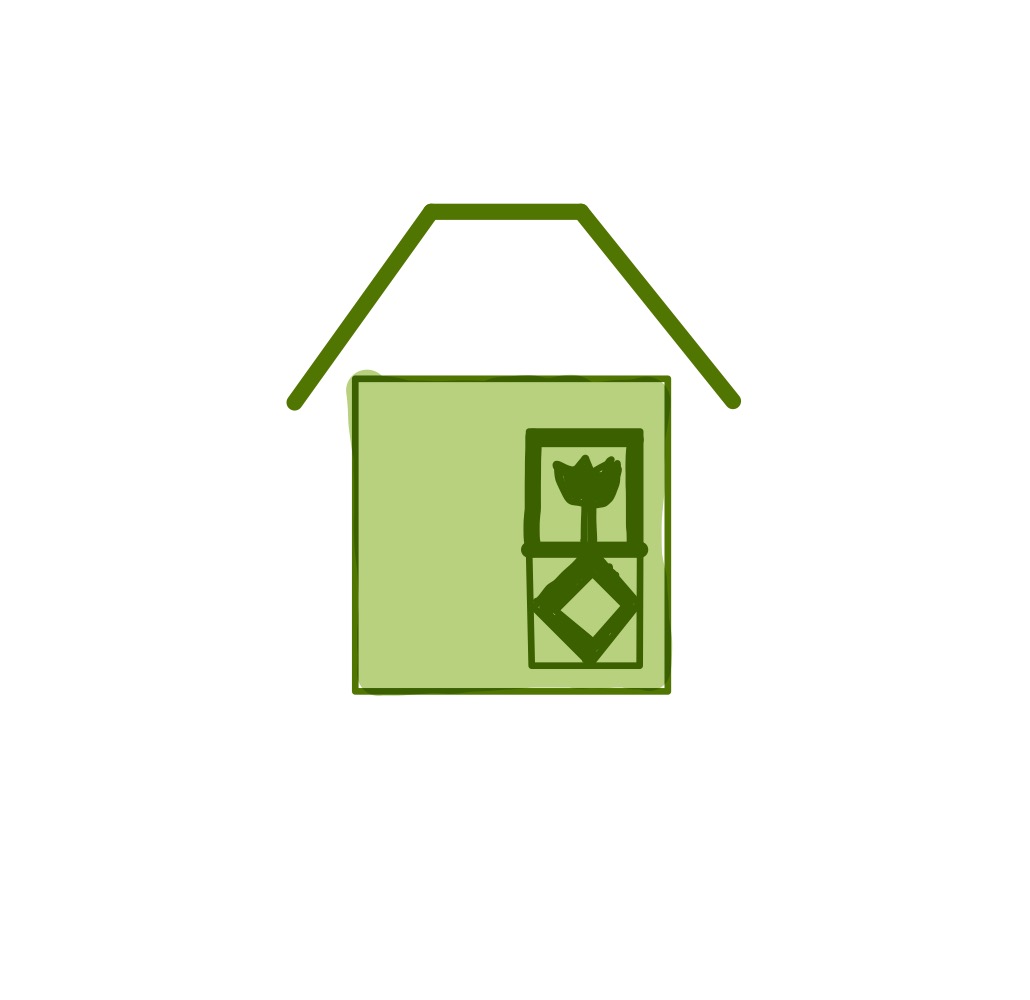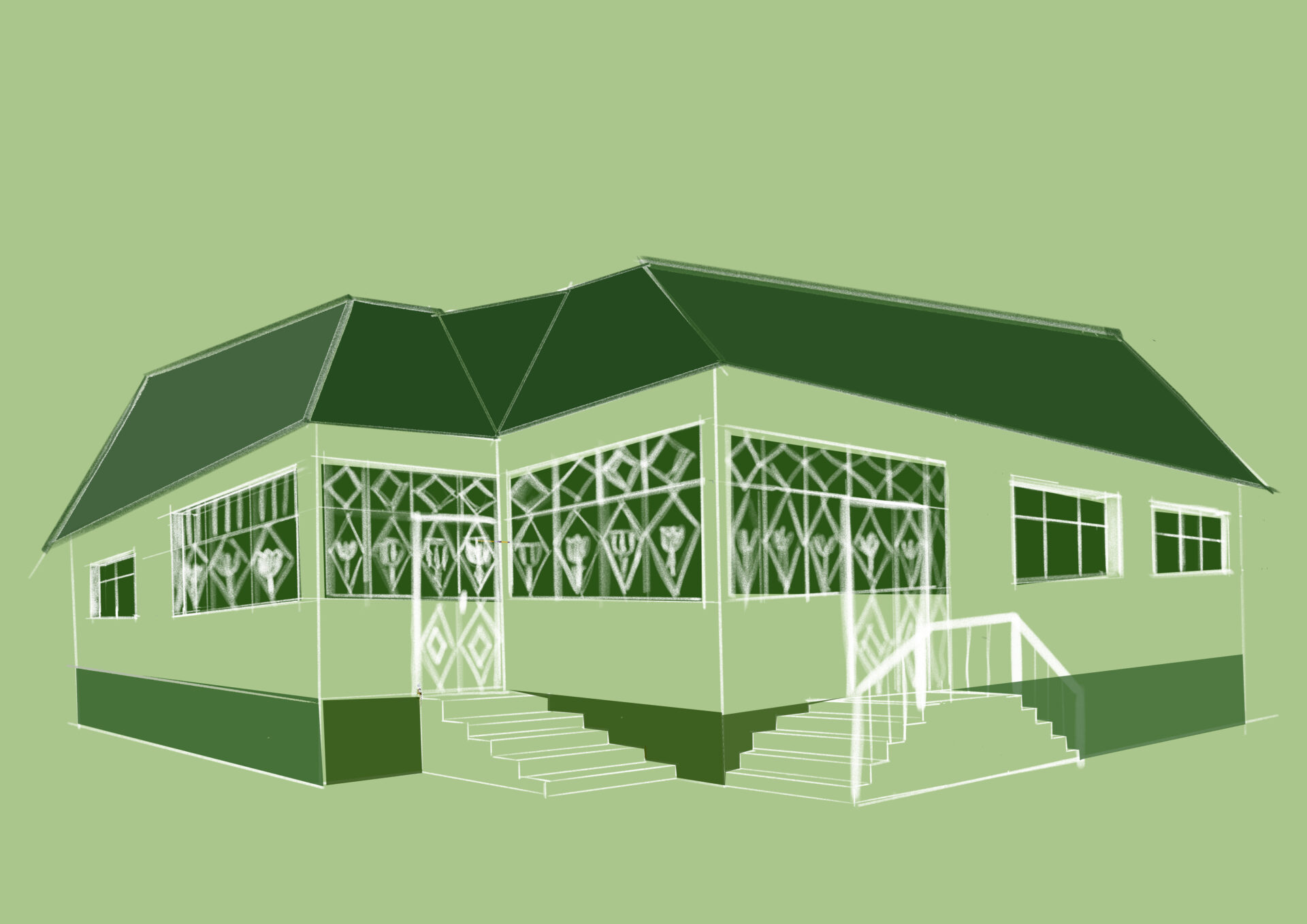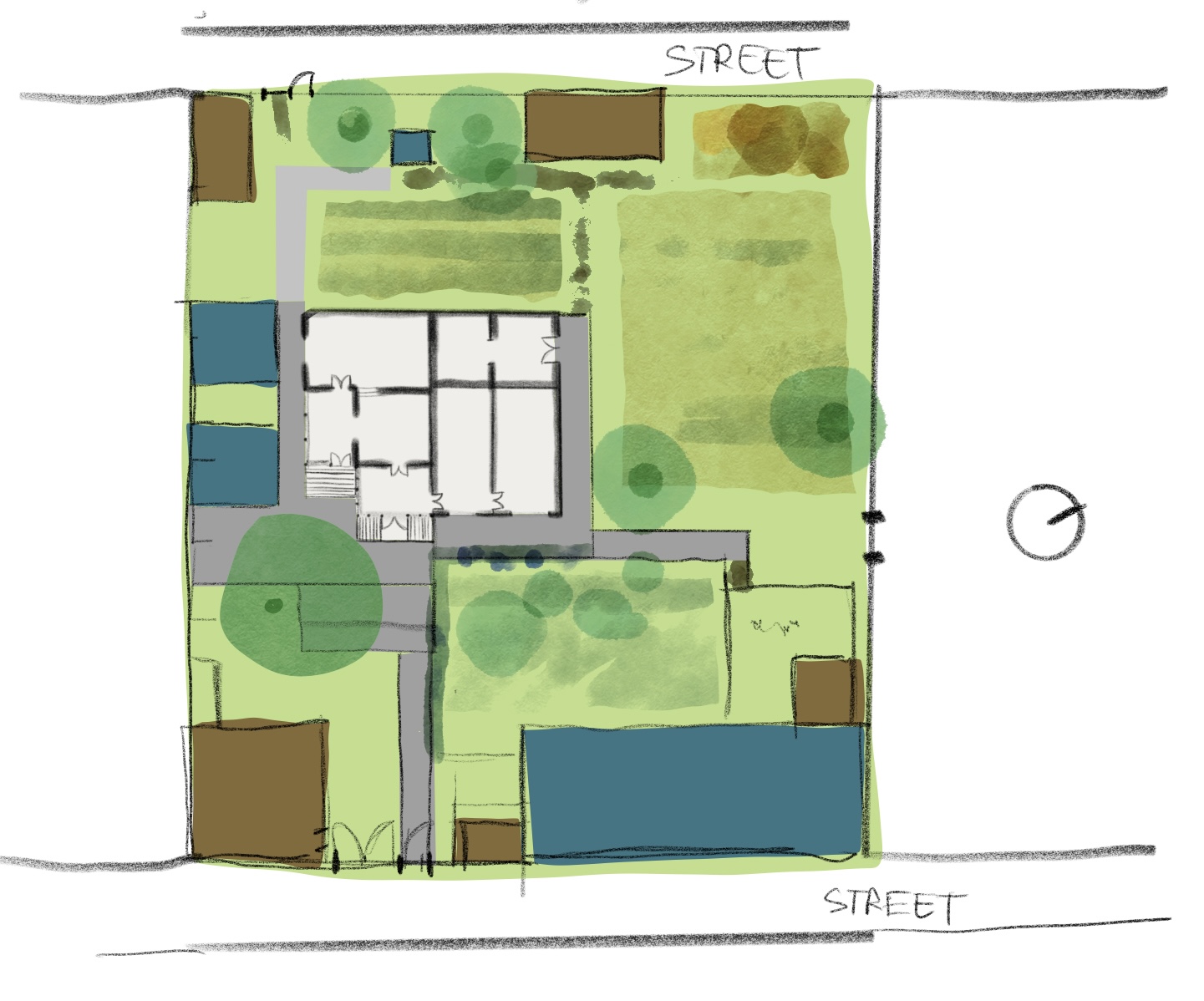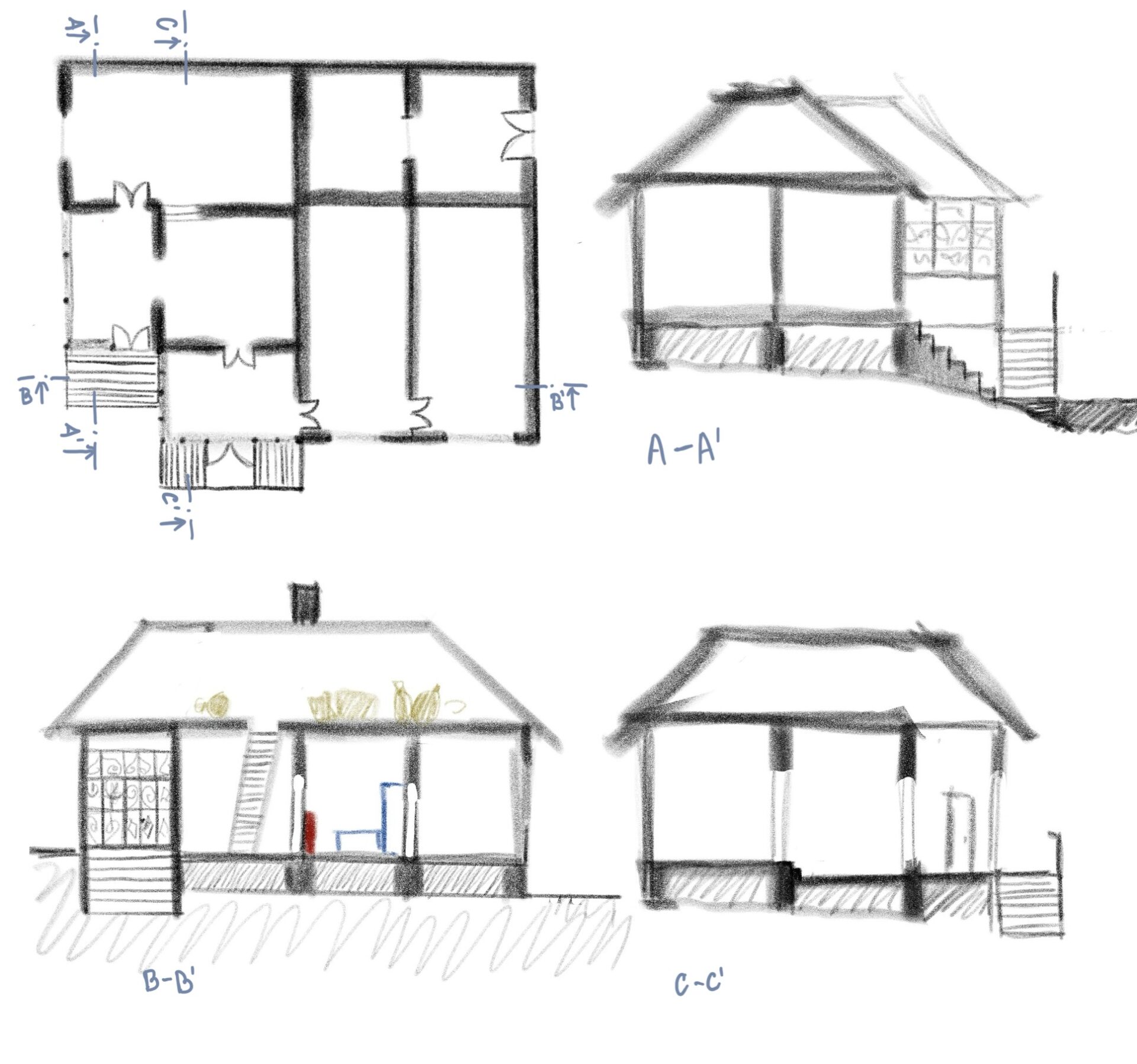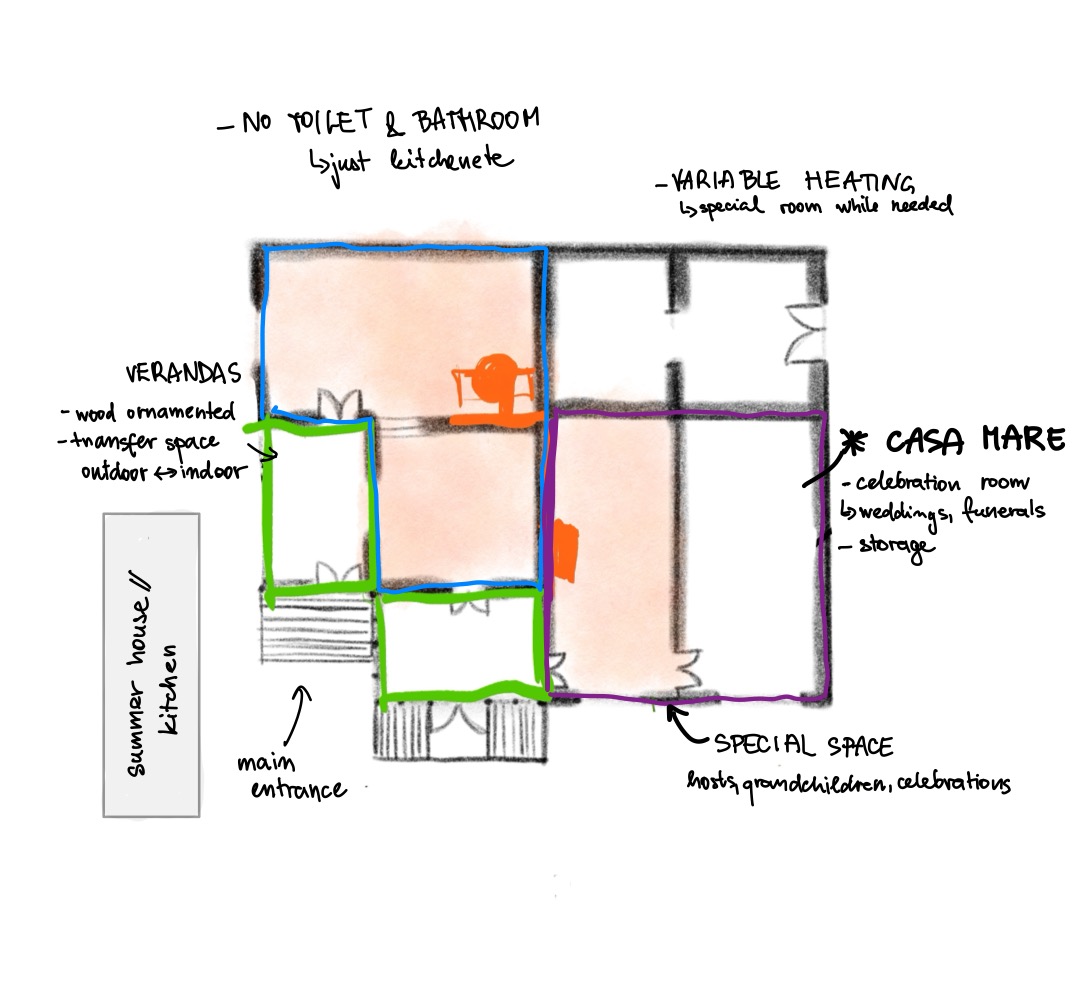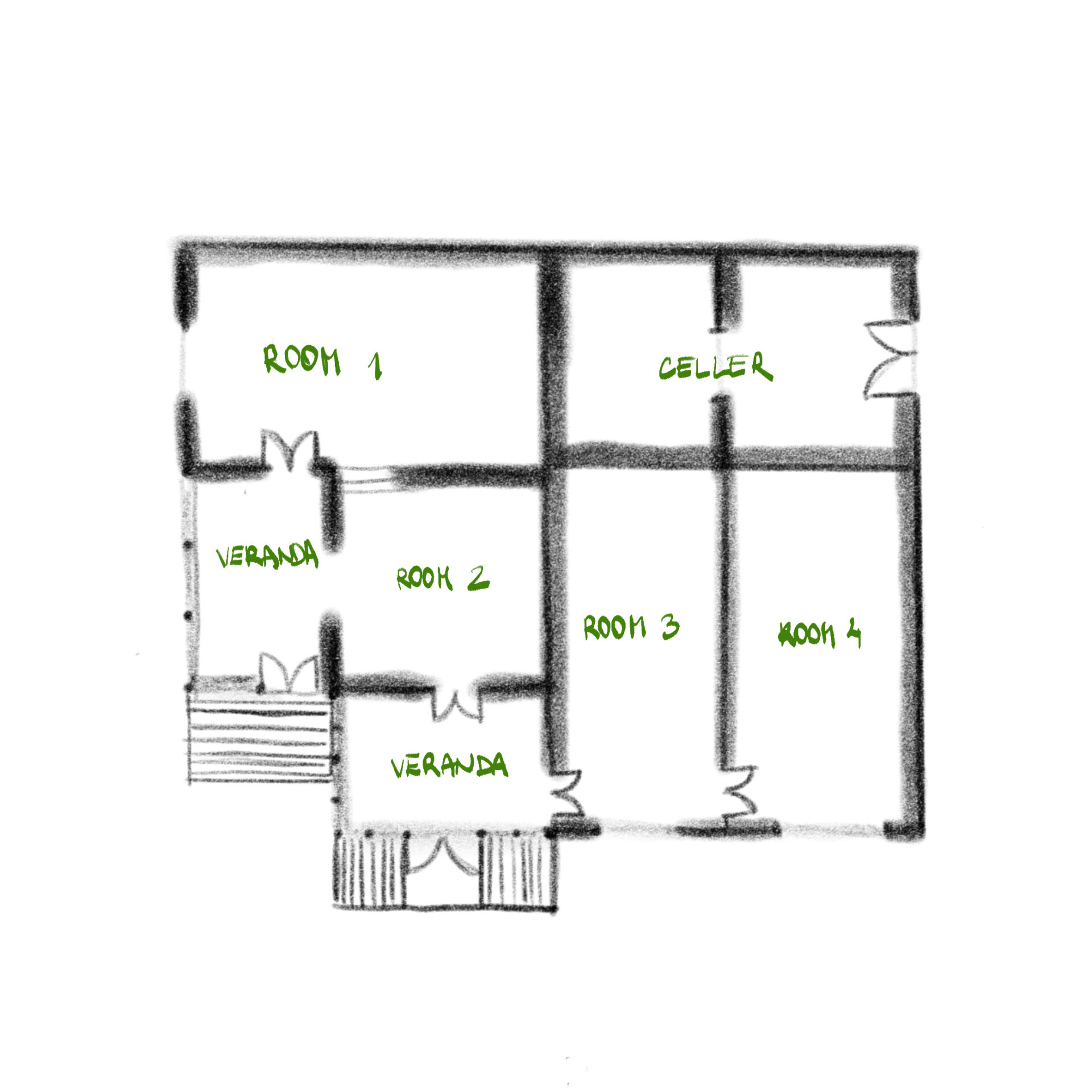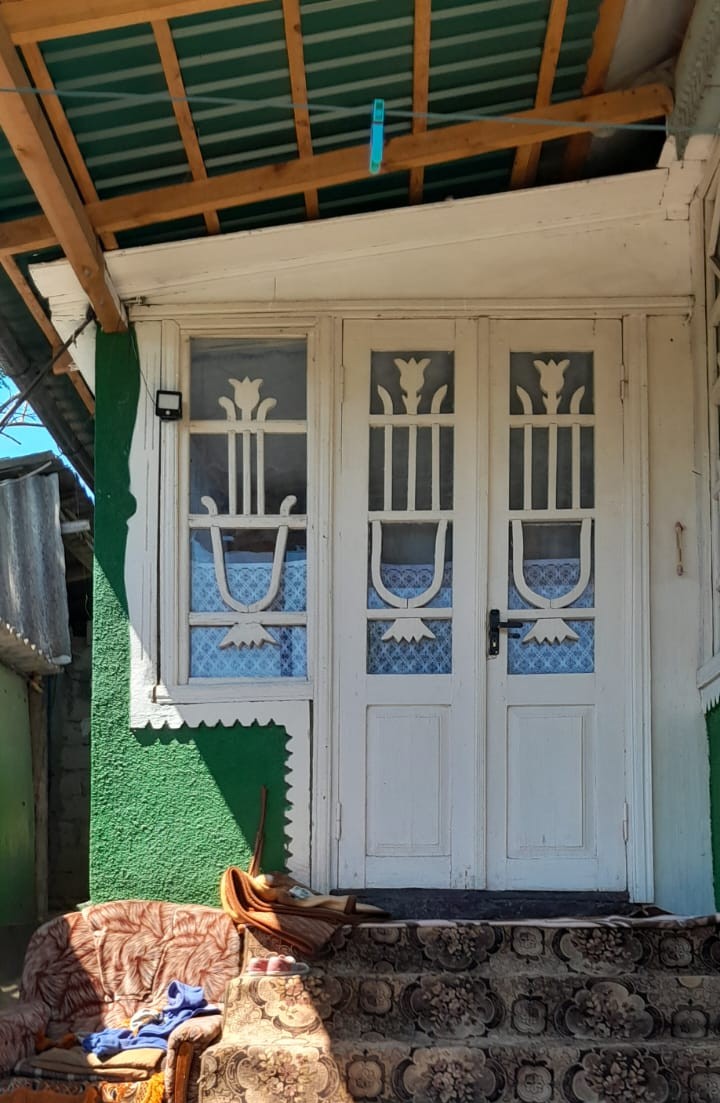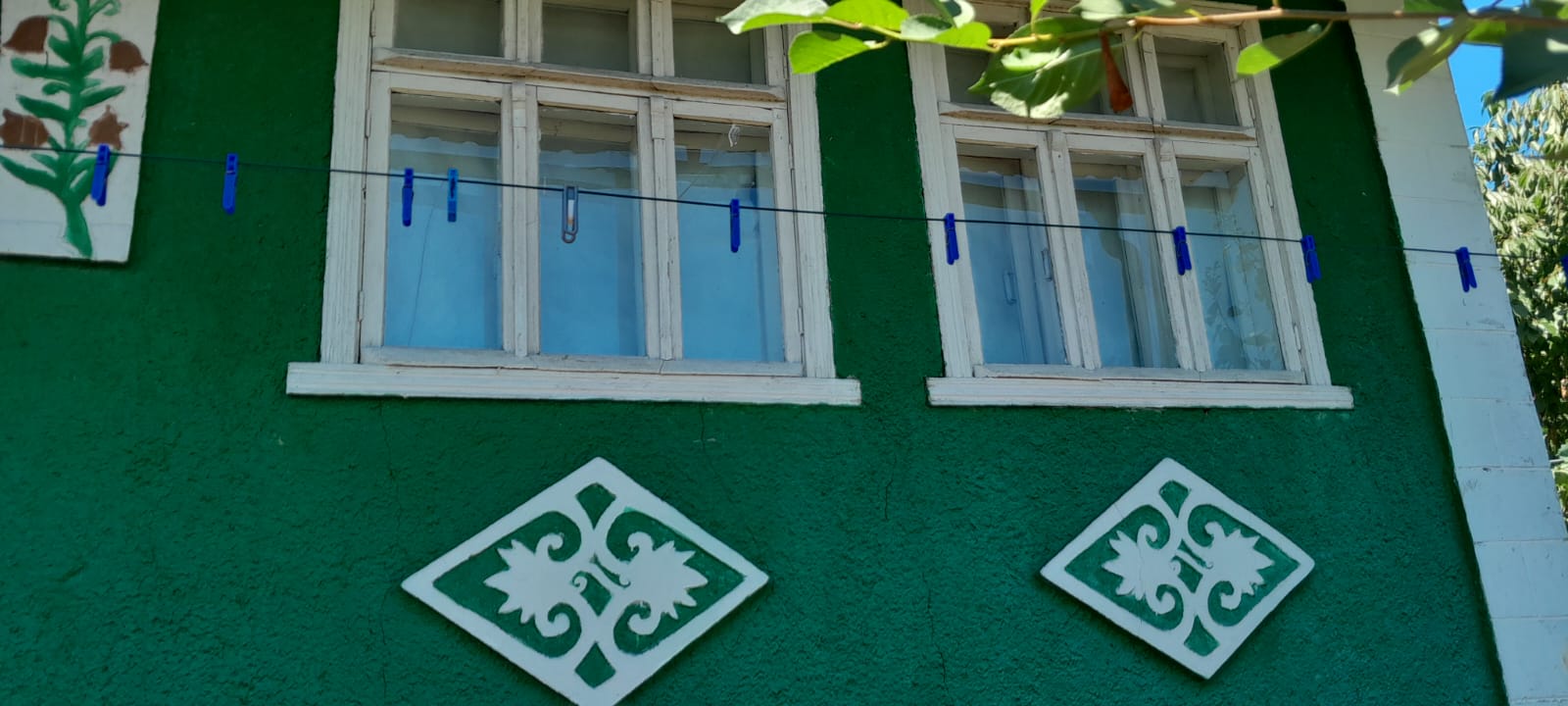my homes
March 25
This house gave me the love for the color green, a happy childhood, and my first home.
The first place I remember living in, which remains accessible even today, is my maternal grandparents’ house. The house from my father’s side was demolished and rebuilt, so I don’t remember it very well, but it was typologically similar to this one.
It is located in a village in Moldova, in the so-called lower part of the village. One unique aspect of my childhood was that both of my parents come from the same village – my father’s parents lived in the upper part. And because both of my grandmothers have the same name, I had to distinguish between them, so I called them “Grandmother Lower” and “Grandmother Upper.” The village is divided into several parts and it was fun to watch the local disputes about who actually belongs to the upper part and who belongs to the lower part. As a child, this division made no sense to me – Grandmother Upper lived more on flat ground, while to reach Grandmother Lower, you had to climb a steep hill. But, as we understand, the social and cultural genesis of a place is an interesting process and a long topic to discuss.
The charm of this house – and Moldovan houses in general – lies in the wooden ornaments on the windows, doors, and sometimes on the gates. These were often made by the residents themselves or with the help of a local carpenter. The designs were widely copied, but each village could create its own unique ornament. Inspiration came from nature, everyday life, or folkloric myths. In our village, floral ornaments (especially tulips) and geometric shapes (diamonds) predominated. They are simple patterns, but they have great depth – reflecting the manual labor, time spent creating them, and the desire for uniqueness. Life in the village is beautiful yet challenging, and I believe it has significantly influenced my mindset and character.
The ornaments on this house were made by my grandfather in his workshop of “everything possible.” He was a tractor driver by profession, but he had a passion for riddles, mathematics, and “innovations.” Almost fifteen years ago, he brought hot water to the house by welding a kind of boiler from metal sheet and connecting it to the stove. He made a similar device for the outdoor bathroom. So imagine – you come home after a long day in the field, light a fire not just for cooking but also to heat up a decent boiler, and then enjoy a nice shower. Compared to washing in a basin, it was a huge change.
The house doesn’t have a bathroom or kitchen inside – those are outside. It’s heated with wood in stoves, and you could say it’s a two-zone house – the main living area and a section for guests. In the living area (two rooms and a hall), my grandparents raised three daughters. In the guest area, we, the grandchildren with our parents, stayed during longer visits. Besides hosting guests, these spaces were also used as storage for clothes and furniture that we sent from the city.
An important and indispensable part of every house is the so-called casa mare (from Romanian, “big house”) – a room for weddings and funerals, which, however, for most of the time, also served as a storage area.
The house was lined with grapevine along the main facade and surrounded by a garden – fruit and ornamental plants in front of the house and a vegetable garden behind the house. The house also had a cellar with a separate entrance in the back. Because the house is on a slope, it was possible to build a standard cellar – deep enough into the ground to maintain coolness and humidity – while the living areas of the house are significantly raised.
Around the house, there are many outbuildings – right by the street are the animal sheds and my grandfather’s shed, while the back part has spaces for storing grain or raising pigs and chickens. There are also fruit trees and various fruit bushes that we, as children, used to pick before they were ripe in the summer. 😊
Over time, the house has changed. A new roof was added, a big walnut tree and grapevine were cut down, large animals like cows and sheep are no longer raised, and a few years ago, my grandfather’s tractor – which, it must be said, was green – was sold. 🙂
First, the children left the house, then the grandchildren, and eventually, slowly, even the creators of the house are leaving…
For some time, however, this house will certainly still stand, and it will live forever in my soul.
Thank you.
